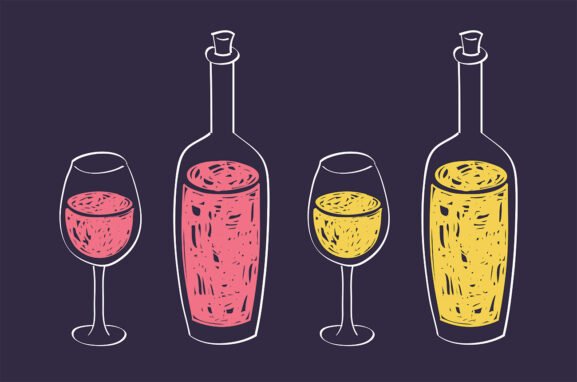In Defense of the Pastry Stout
Much-maligned by dudebro gatekeepers, purist snobs and your dad (probably), the pastry stout is often a punching bag for “what’s wrong with beer today.”
The name itself was first used in the late 2010s as a pejorative for a type of beer that seemed, to many, to be an affront to good brewing sense: intense, high-abv beers loaded with the flavors and ingredients of chocolate desserts, espresso drinks and assorted sweets.
Over the years, these saccharine brews have served as a kind of weather gauge for how any given fan has felt about craft beer excess.
Given the snark, it may feel safe to assume that the segment has jumped the shark. Is this the case? Or, has the frequently disparaged category evolved to embrace the flavor and fluidity modern drinkers are seeking?
Reasonable people can disagree. Even more reasonable people can decide this doesn’t need to be a fight at all.
The “fight,” such as it was in the past, now feels somewhat ridiculous next to the full-on battles for survival breweries are waging every day in the face of rising operational costs and a stagnating market. It is long past time to stop bashing and learn to love the pastry stout.
Craft beer is at a turning point. After years of growth, the segment has leveled off and, in many circles, isn’t “cool” anymore. As breweries try to adjust to a market that isn’t throwing confetti every time they change one hop in an IPA, they’re having to get more creative with how they court new consumers.
Ironically, one option for tightening the belt is to lean into excess. As Cory Meyer of Moksa Brewing in Rocklin, California told me when discussing the value of pastry stouts, “Nobody’s lining up out the door for an IPA can anymore, but they’re still turning out for the stouts.”
I love traditional styles as much as the next beer nerd. Please keep brewing them. Just remember a tradition is anything that happened to your parents’ generation twice, and new ones can be established.
“Beer that tastes like beer”— a phrase I can’t stand—can exist alongside beer that tastes like Black Forest cake. I enjoy Czech Pilsners from side-pour faucets and double-digit-abv stouts with cacao and vanilla. You can, too.
Besides, who says pastry stouts aren’t traditional?
Brewers have always used unexpected ingredients, from ancient unhopped gruits brewed with herbs and roots, to Colonial pumpkin beers that used gourds as a fermentable sugar source when grains were scarce, to the erstwhile Indianapolis Brewing Company’s Duesseldorfer, which won the gold medal at the World’s Fair in Paris in 1900 with a secret ingredient later revealed by the owner’s grandson, Kurt Vonnegut (yep, that one), to be coffee.
Hell, even hops were a suspect new ingredient once upon a time.
One of the best things about beer is its variety, which is also one of the most infuriating things about it. No one having a casual night out with friends wants to have to learn the nuances of 100-plus beer styles just to know what to order.
One way to be more approachable is to offer identifiable and understandable flavors. The average consumer has no idea what a Baltic porter is, but they sure as hell know what chocolate is.
We are constantly being told those coveted Gen Z drinkers value flavor over style or segment loyalty anyway. You know what has flavor? A 10% abv stout brewed with a whole carrot cake.
This doesn’t have to be a gimmick. Used thoughtfully, botanical ingredients like cacao, coffee, vanilla and cinnamon can be used to create nuanced, complex explorations of flavor and aroma. Maybe it helps to think of these beers more like cocktails in that sense.
Ironically, pastry stouts can even remind us of beer’s agricultural roots.
Let’s not forget all these ingredients are agricultural products. They are testaments to the work and skill of farmers and farm laborers, and help to tell the stories of their places of origin. Attention to sourcing, ethical purchasing practices and thoughtful storytelling can all go a long way in how beers using these “dessert” ingredients are presented and received.
Of course, there are also dessert beers brewed with everything from breakfast cereal to Hostess snacks. No pretense of agricultural purity there, but even then, isn’t one of beer’s value propositions supposed to be that it doesn’t take itself too seriously? Isn’t this supposed to be fun?
The last few years have been tough ones for craft beer. Breweries are closing, your favorite brewer is likely stressed out beyond belief and, just as is the case for wine and other adult beverages, there is a vague pallor of doom pervading the space.
Everyone could use comfort and excitement right now, myself included. So, hand me a Pastry Stout—I want to have fun again.
More Craft Beer Coverage
TOP-SELLER
Personalized Beer Stein
In Stock | $60.00
Published: July 24, 2024

